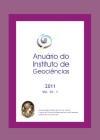Determinação das Cianobactérias de Subsuperfície de Sedimentos Marginais do Brejo do Pau Fincado do Complexo Lagunar de Araruama, RJ, Brasil
DOI:
https://doi.org/10.11137/2011_2_14-23Resumo
O brejo do Pau Fincado é um corpo aquático natural, localizado no Complexo Lagunar de Araruama, que apresenta variações de salinidade em uma amplitude de hipersalina a salobra. Visando acrescentar informações à distribuição e ecologia dos táxons cianobacterianos, este estudo apresenta um levantamento das cianobactérias de subsuperfície do brejo do Pau Fincado. Para este fim, foram realizadas coletas mensais no período de dezembro de 2008 a outubro de 2009, no período de vazante e de cheia. O processamento da análise taxonômica envolveu a confecção de lâminas frescas e permanentes, com realização de medidas em microscópio, onde foram observadas as características morfológicas clássicas. Baseando-se na análise sob microscopia óptica foram identificadas 19 espécies de cianobactérias de subsuperfície. O gênero Aphanothece é mais representativo qualitativamente, com 31,58% da frequência. As espécies Aphanothece stagnina, A.halophytica e Spirulina subsalsa são visualmente as mais expressivas quantitativamente, estando bem adaptadas a um elevado gradiente de salinidade e sendo também os representantes mais halotolerantes e eurialinos desta comunidade.Downloads
Não há dados estatísticos.
Downloads
Publicado
2011-01-01
Como Citar
Silva, L. H. da S. e (2011) “Determinação das Cianobactérias de Subsuperfície de Sedimentos Marginais do Brejo do Pau Fincado do Complexo Lagunar de Araruama, RJ, Brasil”, Anuário do Instituto de Geociências. Rio de Janeiro, BR, 34(2), p. 14–23. doi: 10.11137/2011_2_14-23.
Edição
Seção
não definida
Licença
Os artigos publicados nesta revista se encontram sob a llicença Creative Commons — Atribuição 4.0 Internacional — CC BY 4.0, que permite o uso, distribuição e reprodução em qualquer meio, contanto que o trabalho original seja devidamente citado.
















 Exceto onde indicado de outra forma, o conteúdo deste site é licenciado sob uma licença
Exceto onde indicado de outra forma, o conteúdo deste site é licenciado sob uma licença 